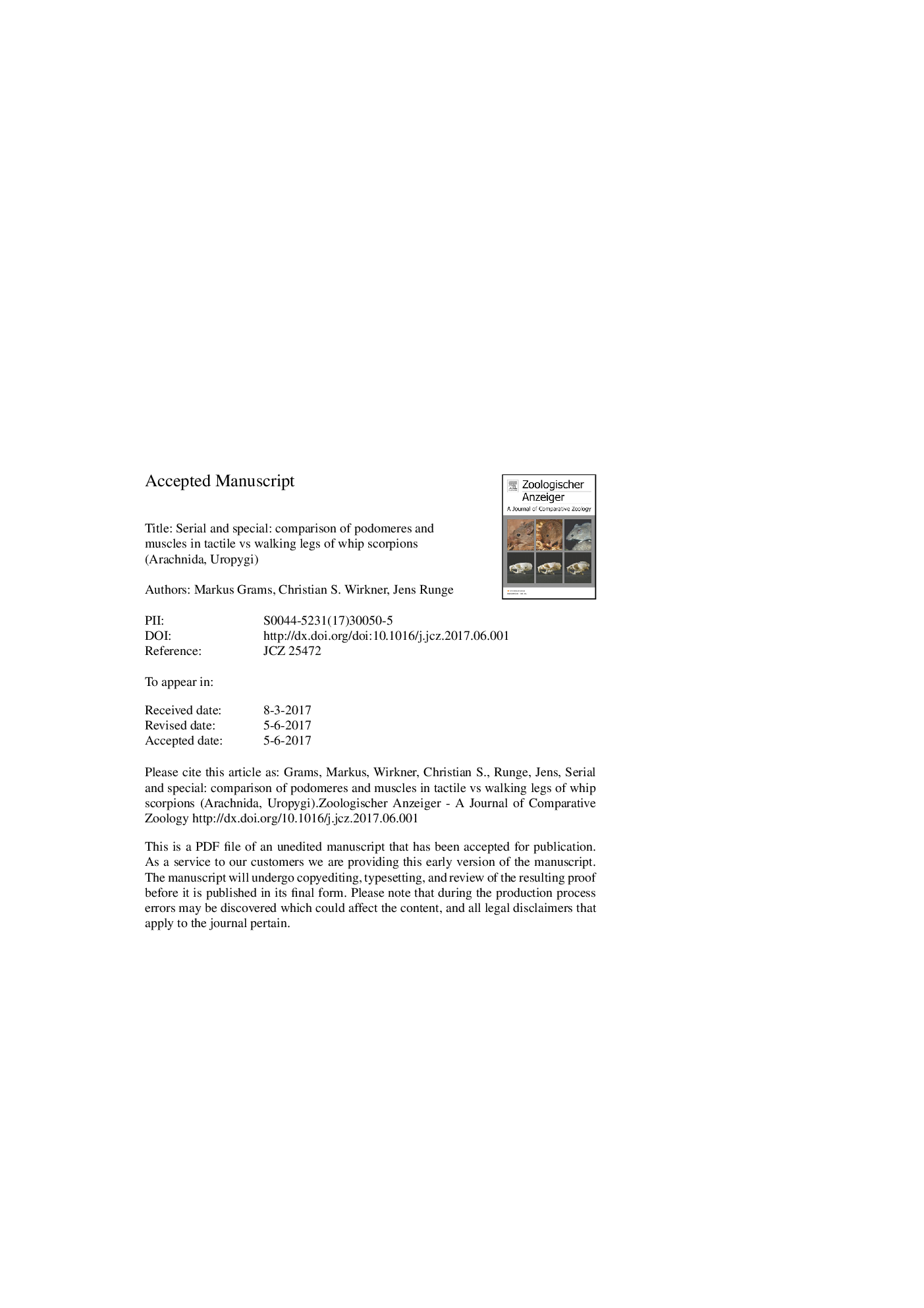| Article ID | Journal | Published Year | Pages | File Type |
|---|---|---|---|---|
| 8626782 | Zoologischer Anzeiger - A Journal of Comparative Zoology | 2018 | 70 Pages |
Abstract
Uropygi are one of a small number of taxa within the Arachnida that do not walk on four pairs of post-pedipalpal legs. The second, third and fourth pair are used for locomotion, while the first pair has evolved into a pair of elongated and antenniform sensory appendages extensively covered with sensilla. The podomeres of this first pair of legs display about six additional tarsomeres, and the terminal claw-like apotele is reduced. A patella as found in the posterior three pairs of legs, and in all four pairs of legs of the closely related Amblypygi and Araneae, appears to be absent. This has caused some authors to assume that the patella has fused with the tibia to form a so-called “patellotibia”. However, this hypothesis is controversial, and various authors have used a labelling of the podomeres of the antenniform pair of legs including a “patella”. To shed more light on the matter, we analyse here the morphology of the four pairs of post-pedipalpal legs in Mastigoproctus giganteus. Our study uses micro-computed tomography (μCT)-based 3D reconstructions of the intrinsic muscles and cuticle components of the podomeres to describe and compare these morphological structures. The evolutionary changes undergone by the podomeres and the muscular system in the antenniform legs of Thelyphonidae are discussed and the homologous identity between podomeres is discussed on the basis of the hypothesis of serial homology. Our findings imply a refutal of the patellotibia hypothesis.
Keywords
Related Topics
Life Sciences
Agricultural and Biological Sciences
Animal Science and Zoology
Authors
Markus Grams, Christian S. Wirkner, Jens Runge,
